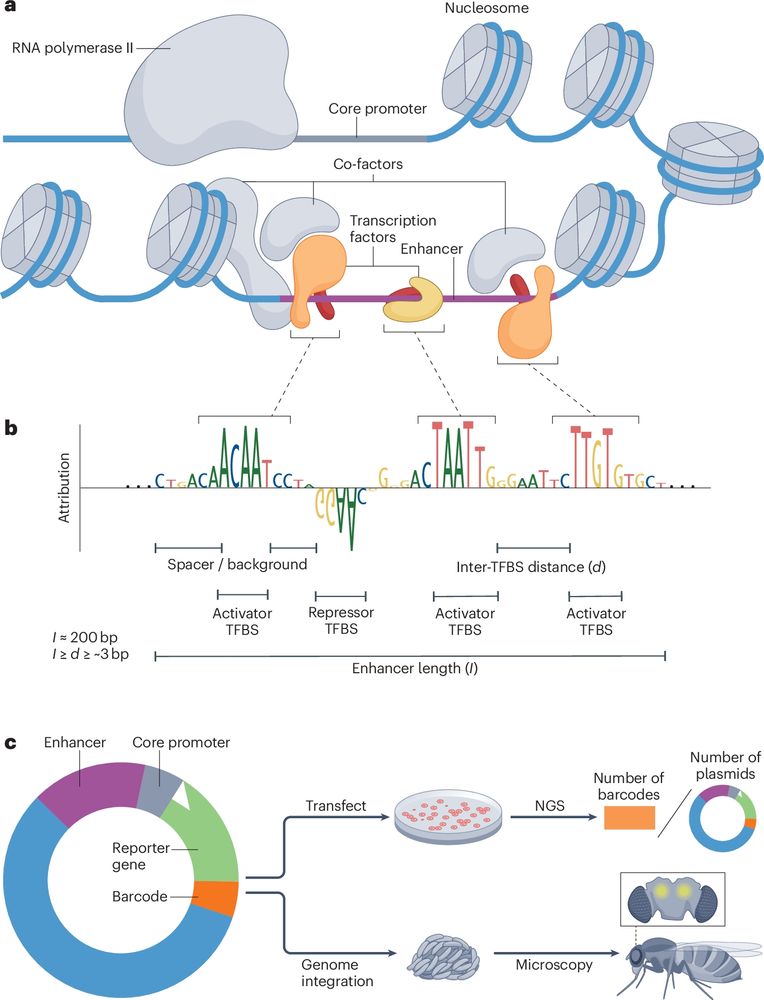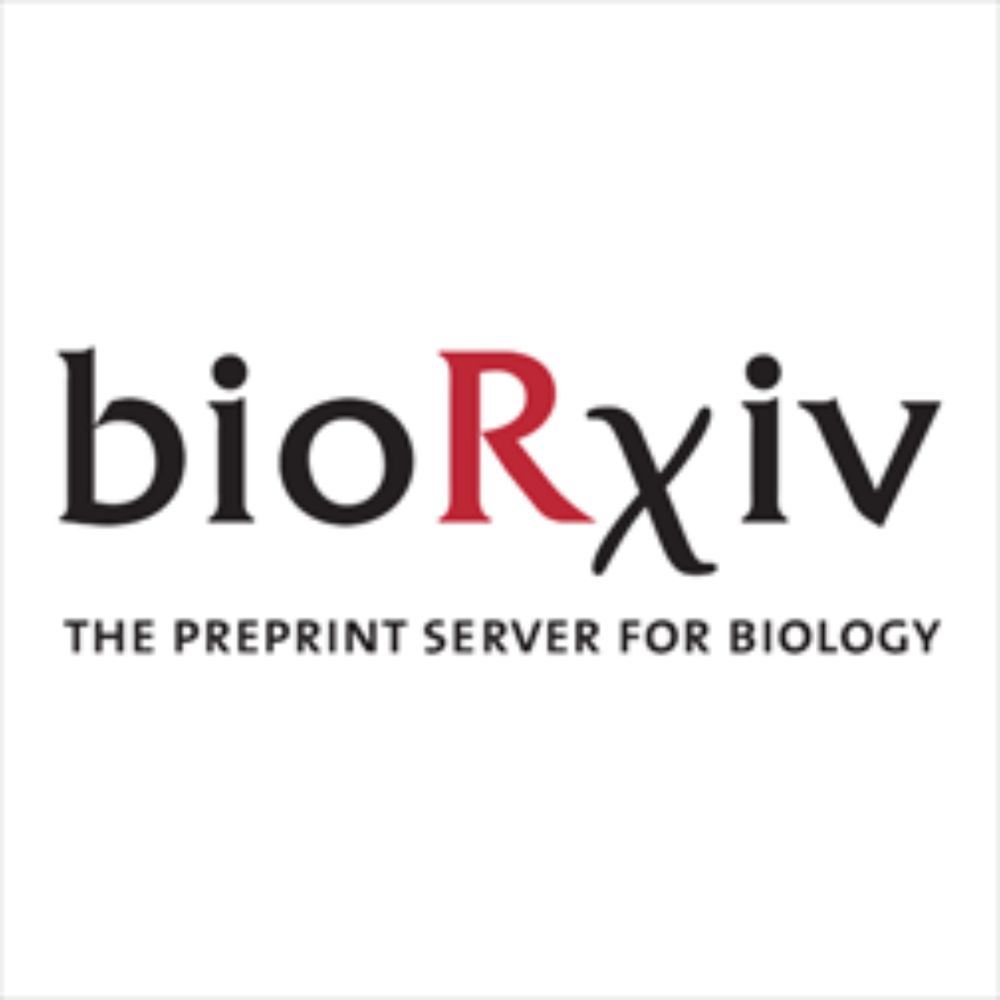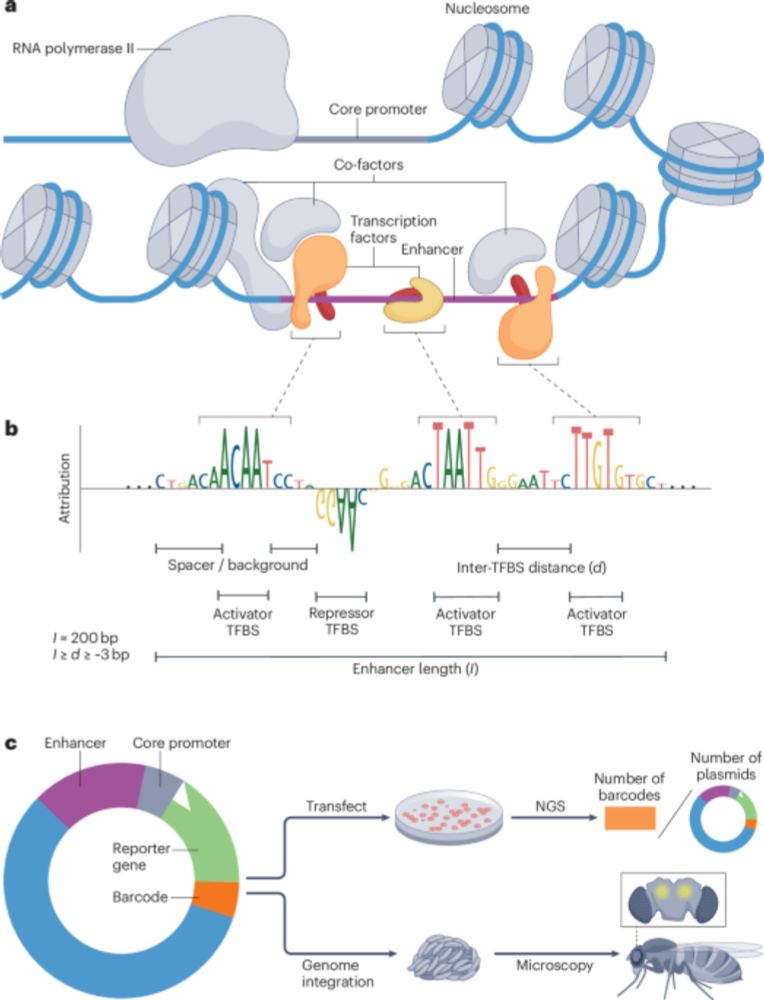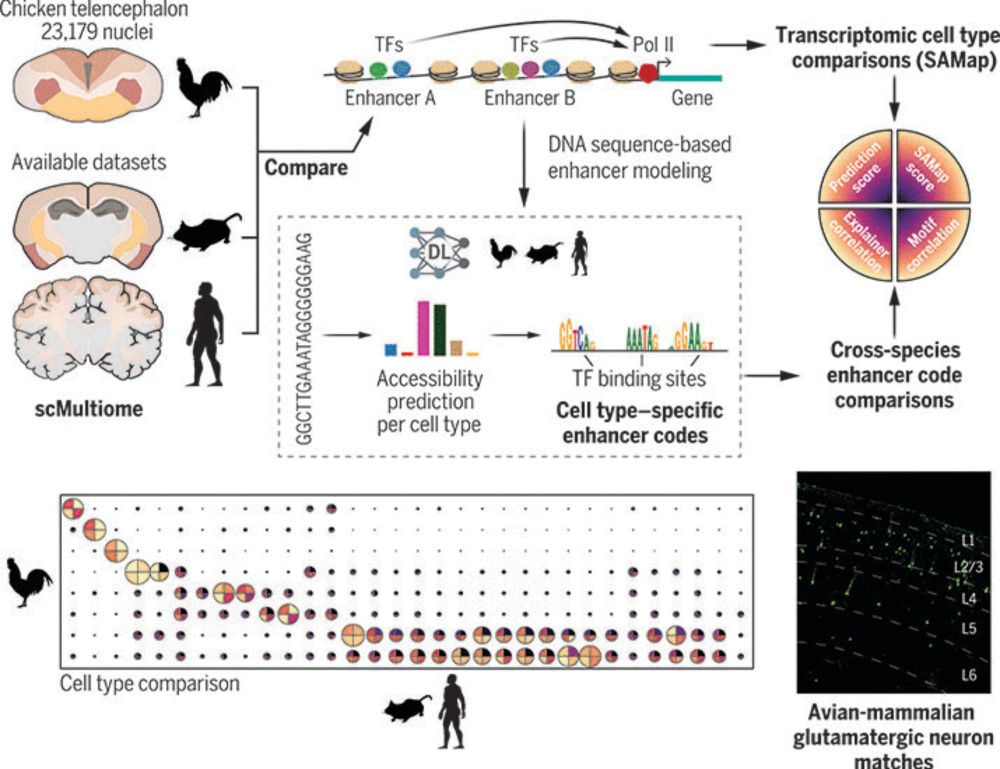
ikea-style logo of splongget
1/ First preprint from @jdemeul.bsky.social lab 🥳! We present our new multi-modal single-cell long-read method SPLONGGET (Single-cell Profiling of LONG-read Genome, Epigenome, and Transcriptome)! www.biorxiv.org/content/10.1...
10.09.2025 15:48 — 👍 46 🔁 16 💬 1 📌 1
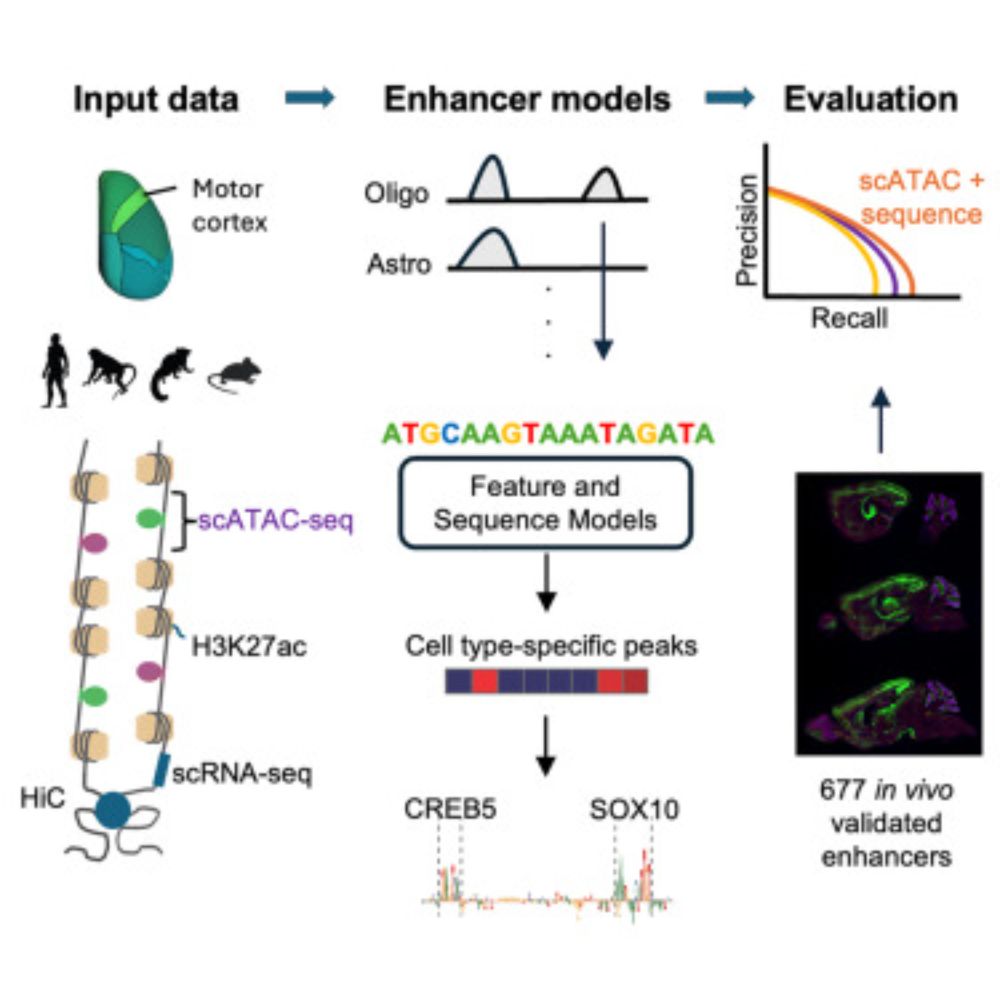
Evaluating methods for the prediction of cell-type-specific enhancers in the mammalian cortex
Johansen et al. report the results of a community challenge to predict functional
enhancers targeting specific brain cell types. By comparing multi-omics machine learning
approaches using in vivo data...
Check out our work on evaluating methods for predicting in vivo cell enhancer activity in the mouse cortex! Combined, scATAC peak specificity and sequence-based CREsted predictions gave the best predictive performance, aiming to advance genetic tool design for cell targeting in the brain.
21.05.2025 16:45 — 👍 20 🔁 10 💬 1 📌 0
One thousand candidate enhancers tested in vivo in the mouse brain! A massive resource and oh so useful as validation set for genome-wide enhancer prediction methods. Super fun to be involved in one of the papers: ‘the prediction challenge paper’ by Nelson&Niklas et al www.cell.com/cell-genomic...
21.05.2025 16:50 — 👍 43 🔁 13 💬 0 📌 0
Great! Thank you so much!
21.05.2025 12:21 — 👍 0 🔁 0 💬 0 📌 0
SharedIt | Springer Nature | For Researchers | Springer Nature__small_youtube
Hi, looks very interesting!
Any chance that you can share the manuscript, for example using www.springernature.com/gp/researche...?
21.05.2025 07:09 — 👍 0 🔁 0 💬 1 📌 0
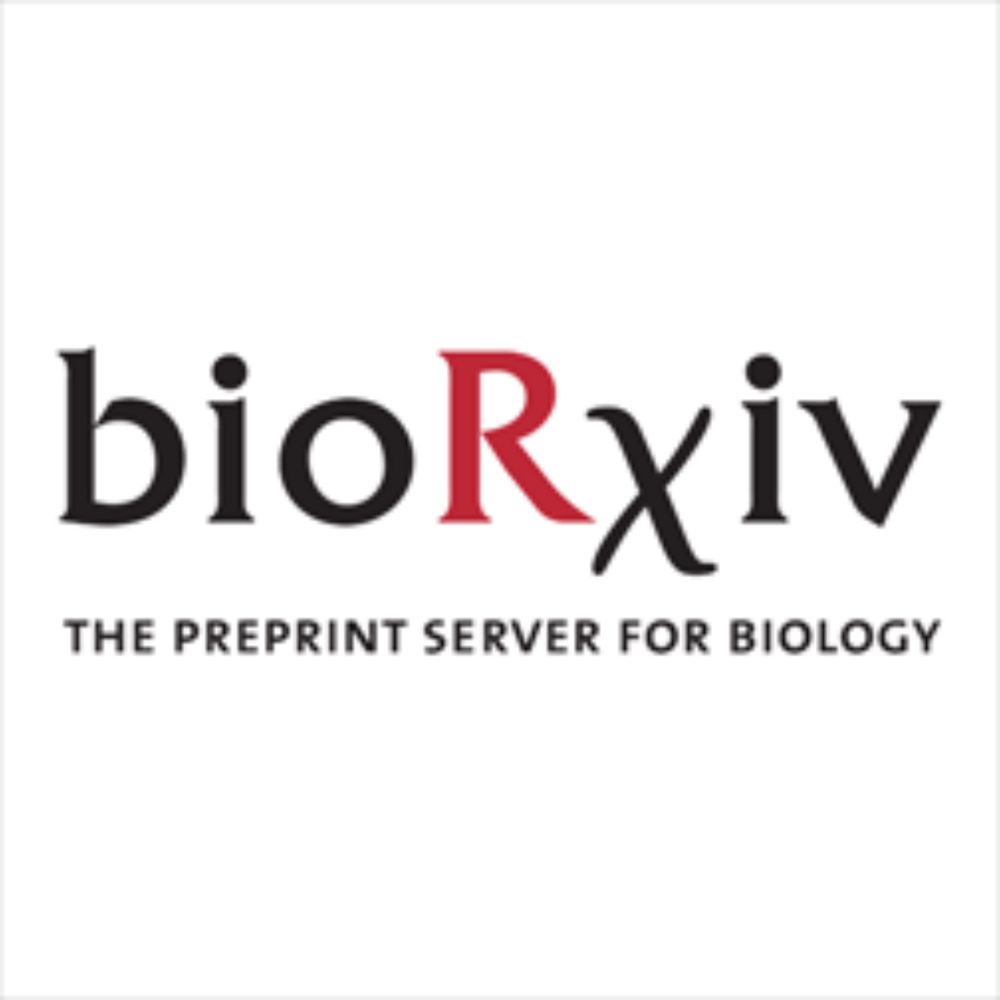
Programmatic design and editing of cis-regulatory elements
The development of modern genome editing tools has enabled researchers to make such edits with high precision but has left unsolved the problem of designing these edits. As a solution, we propose Ledi...
Our preprint on designing and editing cis-regulatory elements using Ledidi is out! Ledidi turns *any* ML model (or set of models) into a designer of edits to DNA sequences that induce desired characteristics.
Preprint: www.biorxiv.org/content/10.1...
GitHub: github.com/jmschrei/led...
24.04.2025 12:59 — 👍 115 🔁 37 💬 2 📌 3
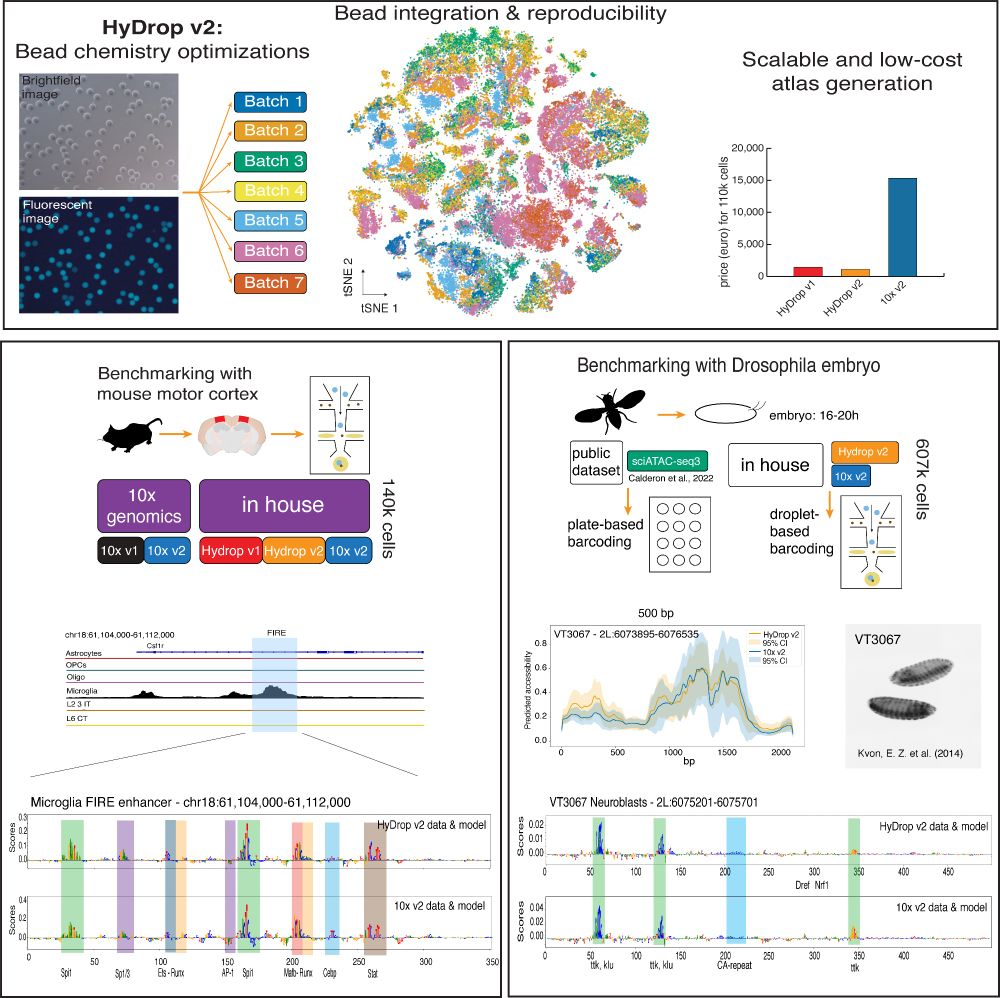
Data collected with the new sequencing platform HyDrop v2 is shown. First, a schematic overview of the bead batches of the microfluidic beads is followed by a tSNE and a barplot showing the costs in comparison to 10x Genomics.
Then, a track of mouse data (cortex) is shown together with nucleotide contribution scores in the FIRE enhancer in microglia. Here, the HyDrop and 10x based models show the same contributions.
On the right, the Drosophila embryo collection is explained; in the paper HyDrop v2 and 10x data are compared to sciATAC data. Then, a nucleotide contribution score is also shown, whereas HyDrop v2 and 10x models show the same contribution, just as in mouse.
Our new preprint is out! We optimized our open-source platform, HyDrop (v2), for scATAC sequencing and generated new atlases for the mouse cortex and Drosophila embryo with 607k cells. Now, we can train sequence-to-function models on data generated with HyDrop v2!
www.biorxiv.org/content/10.1...
04.04.2025 08:52 — 👍 55 🔁 25 💬 2 📌 2
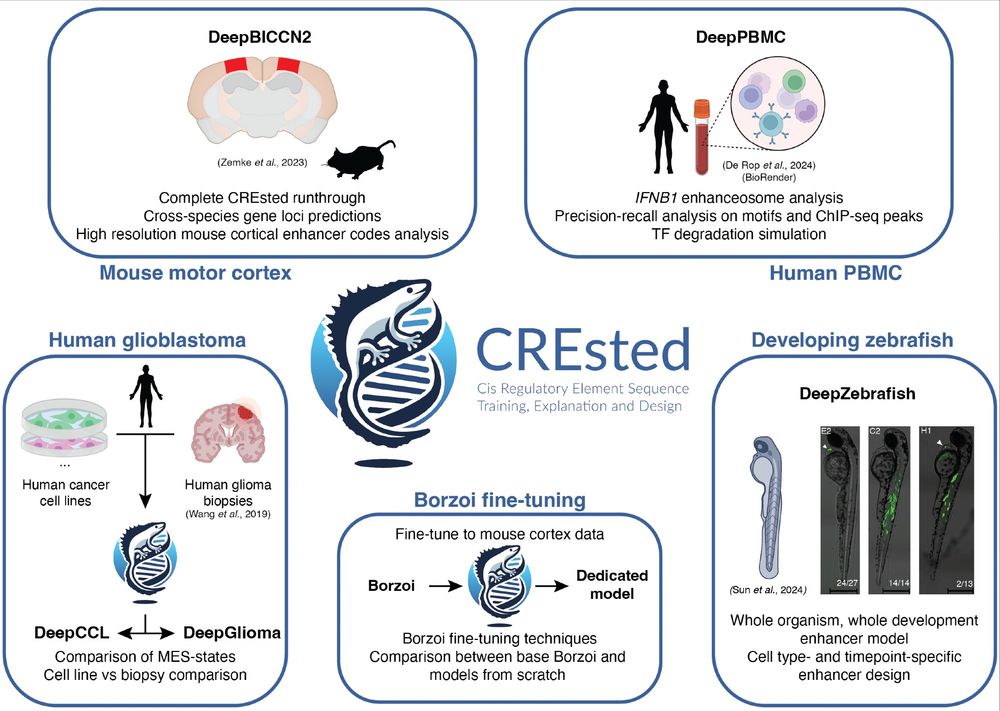
We released our preprint on the CREsted package. CREsted allows for complete modeling of cell type-specific enhancer codes from scATAC-seq data. We demonstrate CREsted’s robust functionality in various species and tissues, and in vivo validate our findings: www.biorxiv.org/content/10.1...
03.04.2025 14:30 — 👍 75 🔁 38 💬 1 📌 5
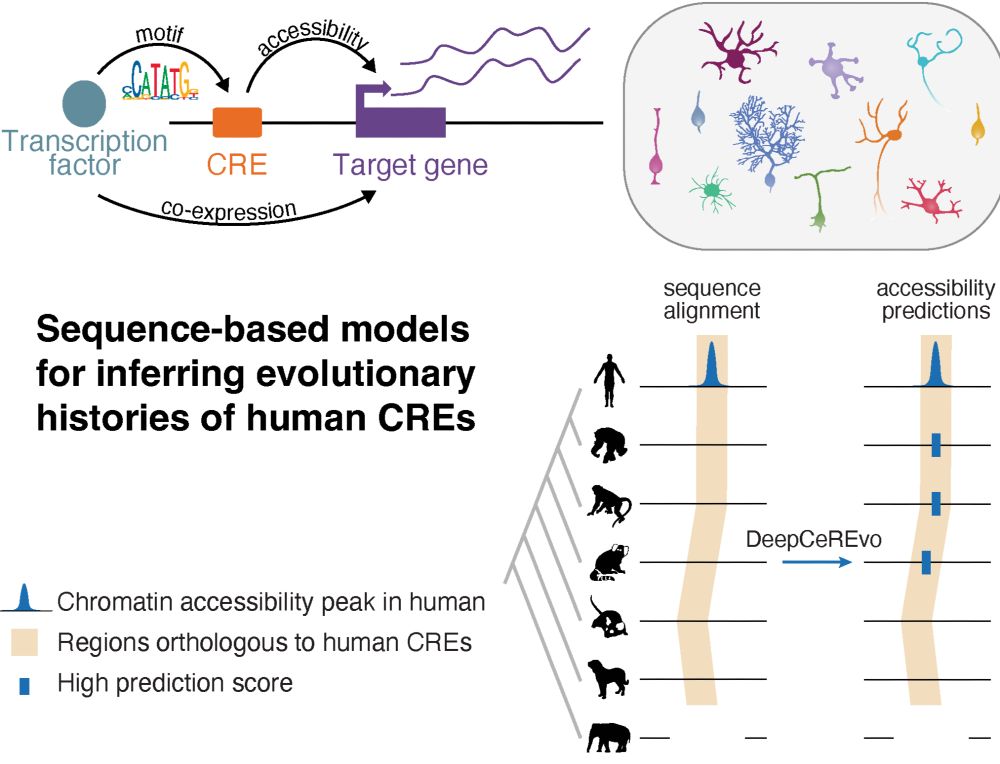
How does gene regulation shape brain evolution? Our new preprint dives into this question in the context of mammalian cerebellum development! rb.gy/dbcxjz
Led by @ioansarr.bsky.social, @marisepp.bsky.social and @tyamadat.bsky.social, in collaboration with @steinaerts.bsky.social
16.03.2025 10:31 — 👍 188 🔁 69 💬 4 📌 5
📄 Update on our preprint about Gene Regulatory Net (GRN) benchmarking 📄
We have included the original and decoupled version of SCENIC+, added a new metric and two more databases. Dictys and SCENIC+ outperformed others, but still performed poorly in causal mechanistic tasks.
doi.org/10.1101/2024... 👇
14.03.2025 10:34 — 👍 50 🔁 18 💬 2 📌 0
Thank you! I'm glad you liked it :).
12.03.2025 19:59 — 👍 1 🔁 0 💬 0 📌 0
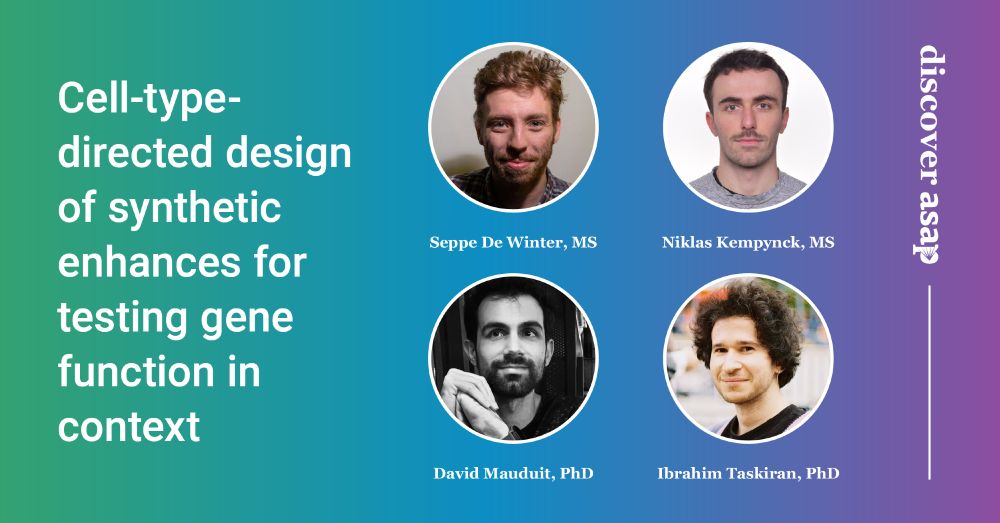
The latest Discover ASAP episode dives into "Cell Type Directed Design of Synthetic Enhancers," a study published in Nature by CRN Team Voet. They discuss how machine learning enables precise enhancer design for targeted gene expression 🧬
Watch: www.youtube.com/watch?v=Qcms...
13.02.2025 16:47 — 👍 6 🔁 3 💬 0 📌 0

Explore cellular diversity with microscopy and AI: registration | KU Leuven
KU Leuven turns 600(!) this year and is celebrating with a public event this weekend! The @steinaerts.bsky.social lab is offering guided lab tours. Want a behind-the-scenes look? All tours on Saturday are full, but you can still register for Sunday!
www.kuleuven.be/600years/exp...
14.02.2025 16:33 — 👍 3 🔁 1 💬 0 📌 1
This has been a fantastic adventure - to capture the genomic regulatory code underlying brain cell types (using deep learning models trained on chromatin accessibility), and then use these models to compare cell types between the bird and mammalian brain
14.02.2025 12:06 — 👍 41 🔁 12 💬 4 📌 1
Just very happy to have our paper out today! A big thanks to all our co-authors, and to Nikolai and @steinaerts.bsky.social for the teamwork over the past years. If you are interested in using our models for cross-species enhancer studies, check out crested.readthedocs.io/en/stable/mo... 🙂
14.02.2025 10:07 — 👍 53 🔁 25 💬 3 📌 3
Principal AI scientist at Genentech. Previously NVIDIA, insitro, Stanford. AI + Genomics.
Our long-term research goal is to understand and predict gene regulation based on DNA sequence information and genome-wide experimental data.
since 1985
https://phrack.org
Scientist at DKFZ and EMBL in Heidelberg, loving stats, genomics and genetics. @OliverStegle@genomic.social. For group news see @steglelab.bluesky.social
EMBO postdoc @teichlab @SCICambridge | Single-cell genomics and gene regulation | PhD in evodevo genomics @kaessmannlab @UniHeidelberg
Spatial biology, imaging, tinkering
Developmental neurobiology and brain evolution beyond vertebrates
Suckered into cephalopod and killifish biology
Full Professor of Biology at KU Leuven, Belgium
working on single cell genomics & developmental genetics at
@uwgenome. scientific co-founder, @scalebio
Bioengineer using organoids to understand patterning and morphogenesis. Associate Professor @kuleuvenuniversity.bsky.social
Genomics, AI, sequence-to-function models, mechanisms of the cis-regulatory code. Investigator at the Stowers Institute.
Computational methods for epigenetic, CRISPR genome editing and single-cell genomics. Associate Professor at MGH / Harvard Medical School. http://pinellolab.org
Epigenetics & Genomics
Harvard University & Broad Institute
https://www.macfound.org/fellows/class-of-2023/jason-d-buenrostro
buenrostrolab.com
Genome, machine learning, and omics enthusiast
(she/her) Computational biologist and post-doc scientist in the Greenleaf and Kundaje labs at Stanford. Interested in understanding how cells know what to become (transcription factors, gene regulation, dev bio, open science) www.selinjessa.com
Molecular Biologist (aemonten.github.io) 丨Chief Editor @ CSH Protocols (cshprotocols.cshlp.org) 丨Head of the Integrity in Publishing Group at CSHL Press 丨Chair "Molecular Biosystems Conference" (molbiosystems.com) 丨(Oxford) Comma King 丨Central Dogma Police
VP, Genentech
Associate Professor at the Allen School of Computer Science and Engineering, University of Washington (on leave)
Making sophisticated guesses at how DNA will behave.
Postdoc at @CBD KU Leuven 🇧🇪. Interested in translation, structural biology, ageing and everything involving proteins


